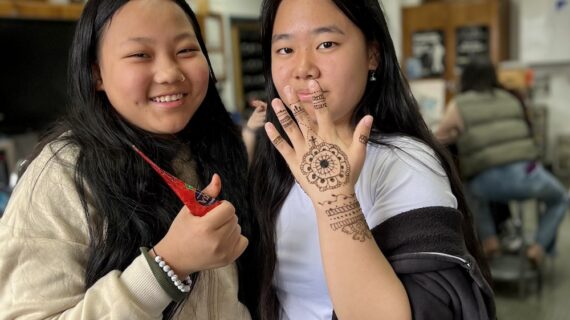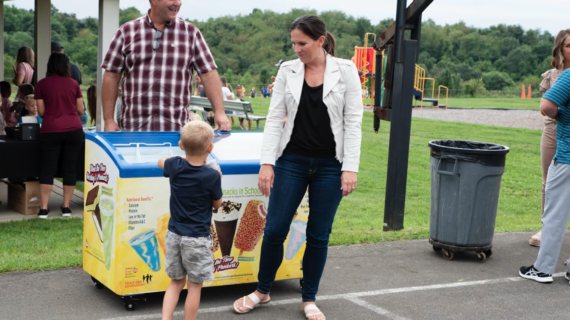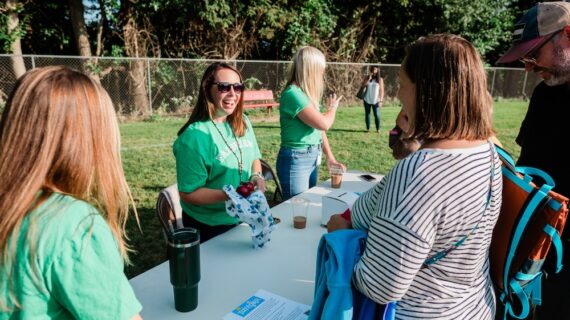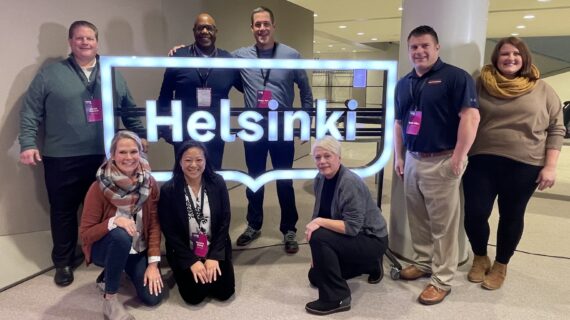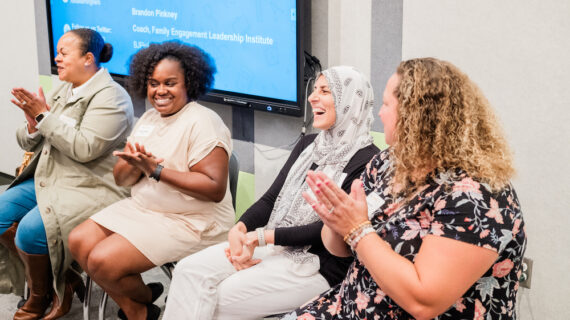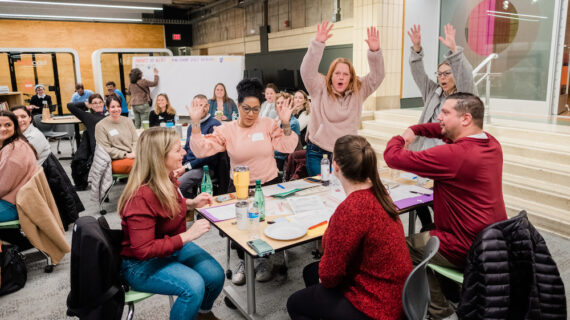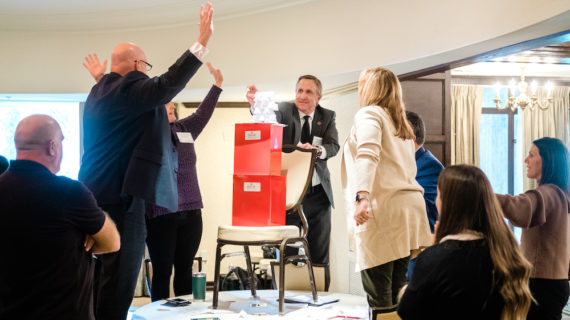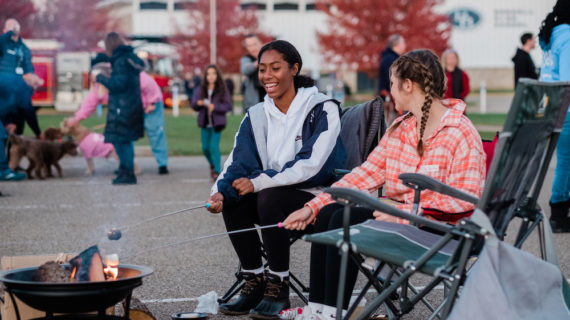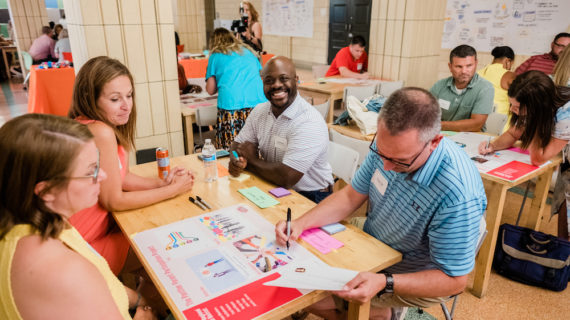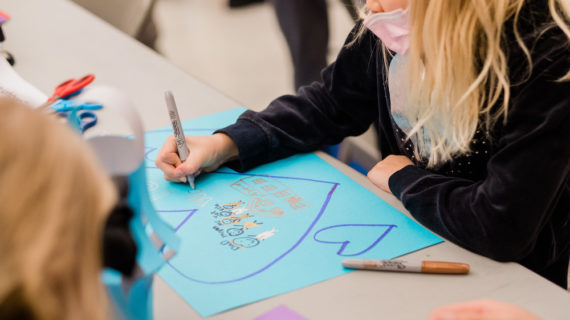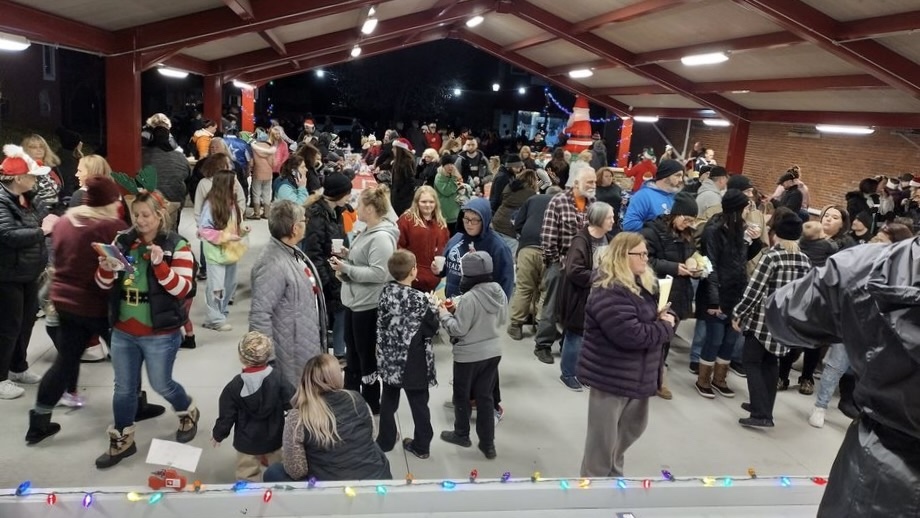
Parents as Allies: Growing new community connections at California Area
At California Area school district, a rural community south of Pittsburgh, there were always parents who made an effort to get involved. But as in many places around the country, the same small group of parents were always the ones volunteering to host a classroom holiday party or bake cookies for a fundraiser.
Lesley Daniels is one of those frequent volunteers, happy to give her time to her kids’ school sports teams and help out with the PTA. She’s one of those people, she says, that knows the janitorial staff well enough that they sometimes lend her keys she probably shouldn’t have.
But Daniels didn’t want the group of involved parents at California Area to remain small. So when she was asked to work with the Parents as Allies (PAA) project, which brings teams of parents and school staff together to build better engagement, she was ready.
Over the course of two years, the creative hacks developed by the district’s PAA team have increased communication and gotten many more parents directly involved in the school community.
For Daniels and for Rachel Nagy, California Area’s elementary principal and Daniels’ partner in running the district’s PAA team, it has been an eye-opening and inspiring experience.
WHAT DID THEY TRY?
Daniels and Nagy dug into the research shared by the Brookings Institution at a PAA kickoff event, including data on the barriers that can keep parents from engaging with their child’s school. One big barrier Daniels hadn’t considered: Not every parent had had a positive school experience.
Nagy discovered communication barriers that schools often ignore. Among other things, not all parents have jobs where they check email regularly. Some parents rarely see email while working overnight shifts and long hours.
“Parents are really, really busy and they are trying their best,” Nagy says, so schools need to make it easier for them to stay in touch and get involved.
That understanding led the team to create Sunday Info Alerts – automated texts to parents on Sunday nights sharing the week’s upcoming events and information. They also began regularly posting news and volunteer opportunities on social media to help reach parents who may see Facebook more than email.
The next step? “We can’t just invite people to come to us,” Nagy says. “We have to go to them.”
The school set up tables at the local Holly Days community event, held each December in a spot that’s more easily walkable for families than the school. Teachers, clad in jeans and holiday sweaters, were able to connect with parents over hot cocoa through conversations that had nothing to do with school.
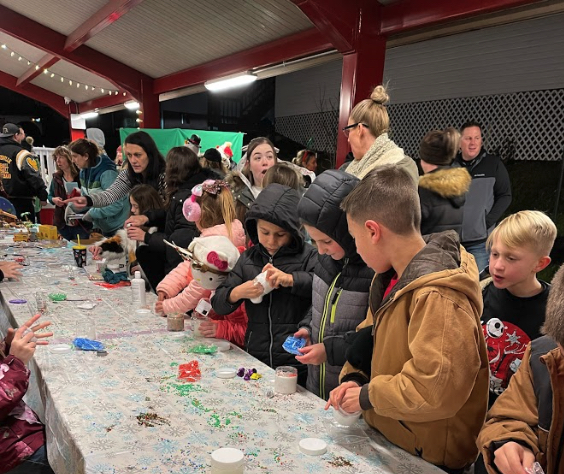
Dozens of families lined up for the school’s photo booth, where they took holiday pictures with teachers. At one point, the line was so long that the PAA team couldn’t print the photos fast enough. They began texting them to eager families.
Parents and school staff, Nagy says, “felt that community connection rather than the formality of having those parent conversations in school.”
By last spring, the team was ready to build on that progress by getting parents excited about a school activity happening at the community park. In partnership with an afterschool fitness club called Crush It, they planned an afterschool community 5K run.
In the weeks leading up to it, kids were sharing with their parents about the silly exercise moves they were using to stretch their muscles and get ready for the run. These weren’t kids who normally play on school sports teams. And their parents aren’t folks like Lesley Daniels who routinely show up at school in spirit wear with jugs of Gatorade and a cooler full of sliced oranges.
On race day, kids and school staff filtered out of their classrooms and walked down the road together to the community park. They were greeted by about 40 community members – parents who felt a sense of pride in their child and connection to their school community that continues to grow as California Area continues its parent-school engagement journey.
WHAT WOULD THEY TELL OTHER SCHOOLS?
- Talk to people. The PAA team used the design thinking process, which included teachers doing “empathy interviews” with parents and parents doing the same with school staff. In the process, they discovered barriers to communication and connection on both sides. Figure out where your disconnects are, Nagy and Daniels say. Go out and talk to people, and hear what they say.
- Don’t underestimate the power of small hacks. Try something little, because it might just have a big impact. And it will lead you to positive changes that you can make permanent.
What’s sustainable is what’s easy and manageable,” Daniels says. “It does not always have to be a grandiose plan.”
